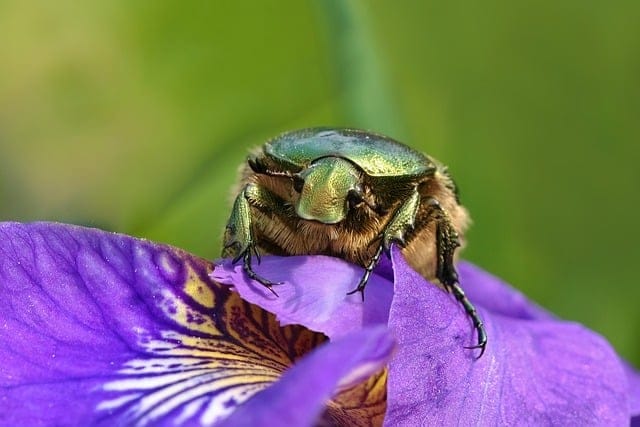Promoting pollinators: Metallic green beetles
Beetles are one of the most diverse groups of insects on Earth, and they play crucial roles in ecosystems

In this article:
- Introduction
- Taxonomy and Classification
- Physical Characteristics
- Distribution and Habitat
- Life Cycle
- Feeding Habits
- Pollination Role
- Reproductive Behavior
- Interaction with Other Species
- Population Status and Conservation
- Human Interaction and Cultural Significance
- Research and Future Directions
- Conclusion
Introduction
Beetles are one of the most diverse groups of insects on Earth, and they play crucial roles in ecosystems. Among the fascinating beetles found worldwide, metallic green beetles stand out for their unique physical characteristics and important ecological roles.
Taxonomy and Classification
Metallic green beetles belong to the family Buprestidae, which comprises over 15,000 known species. They are classified within the order Coleoptera, making them close relatives of other beetles. Each species within this family has its own distinct features and behaviors.
Physical Characteristics
Metallic green beetles are known for their stunning iridescent green coloration, which serves as a defensive mechanism against predators. They have a compact body structure, and their elytra (wing covers) are usually hardened and protective. Some species exhibit variations in color, pattern, and size.
Distribution and Habitat
Metallic green beetles can be found in various regions worldwide, including North and South America, Europe, Asia, and Africa. They occupy diverse habitats such as forests, grasslands, wetlands, and deserts. Different species have specific habitat preferences, ranging from tropical rainforests to temperate woodlands.
Life Cycle
Metallic green beetles undergo a complete metamorphosis, including the various stages of egg, larva, pupa, and adult. The duration of each stage can vary between species, but generally, their life cycle takes one to three years to complete. Larvae often develop within decaying wood or tree trunks.
Feeding Habits
As larvae, metallic green beetles typically feed on decaying plant material and wood, aiding in the recycling of organic matter within their habitats. Once they reach the adult stage, they primarily consume pollen, nectar, and plant juices. Their feeding behavior makes them important pollinators for a wide range of plant species.
Pollination Role
Metallic green beetles play a significant role in pollination. As they feed on flowers for their nectar and pollen, they inadvertently transfer pollen grains from the male part (stamen) to the female part (pistil) of the flower, aiding in plant reproduction. While not as efficient as bees or butterflies, their contribution to pollination should not be underestimated.
Reproductive Behavior
Various reproductive behaviors have been observed in metallic green beetles, including courtship displays, mating rituals, and egg-laying behaviors. Males often engage in territorial disputes to attract females. After mating, females deposit eggs in suitable locations, such as decaying wood or soil, to ensure the survival and development of their offspring.
Interaction with Other Species
Metallic green beetles interact with numerous organisms within their ecosystems. They serve as prey for birds, mammals, and other insects. Additionally, they may have symbiotic relationships with microorganisms that aid in their digestion or protection against pathogens.
Population Status and Conservation
The population status of metallic green beetles varies across different species and regions. Some species may face threats such as habitat loss, climate change, and excessive use of pesticides. To ensure their conservation, efforts should be made to protect their natural habitats, raise awareness about their ecological importance, and promote sustainable agricultural practices.
Human Interaction and Cultural Significance
Metallic green beetles have fascinated humans for centuries. They have been depicted in ancient artworks and cultural traditions, symbolizing various concepts such as luck, resilience, and renewal. Their unique beauty also makes them sought-after specimens for collectors.
Research and Future Directions
Scientific research on metallic green beetles continues to expand our knowledge of their ecology, behavior, and conservation needs. Future studies may focus on understanding their precise role in pollination networks, investigating their interactions with specific plant species, and developing effective conservation strategies.
Conclusion
Metallic green beetles are remarkable pollinators with unique physical characteristics and important ecological roles. By understanding their taxonomy, habitat requirements, and reproductive behavior, we can promote their conservation and recognize the significance of these beetles in maintaining the health and diversity of ecosystems worldwide.
